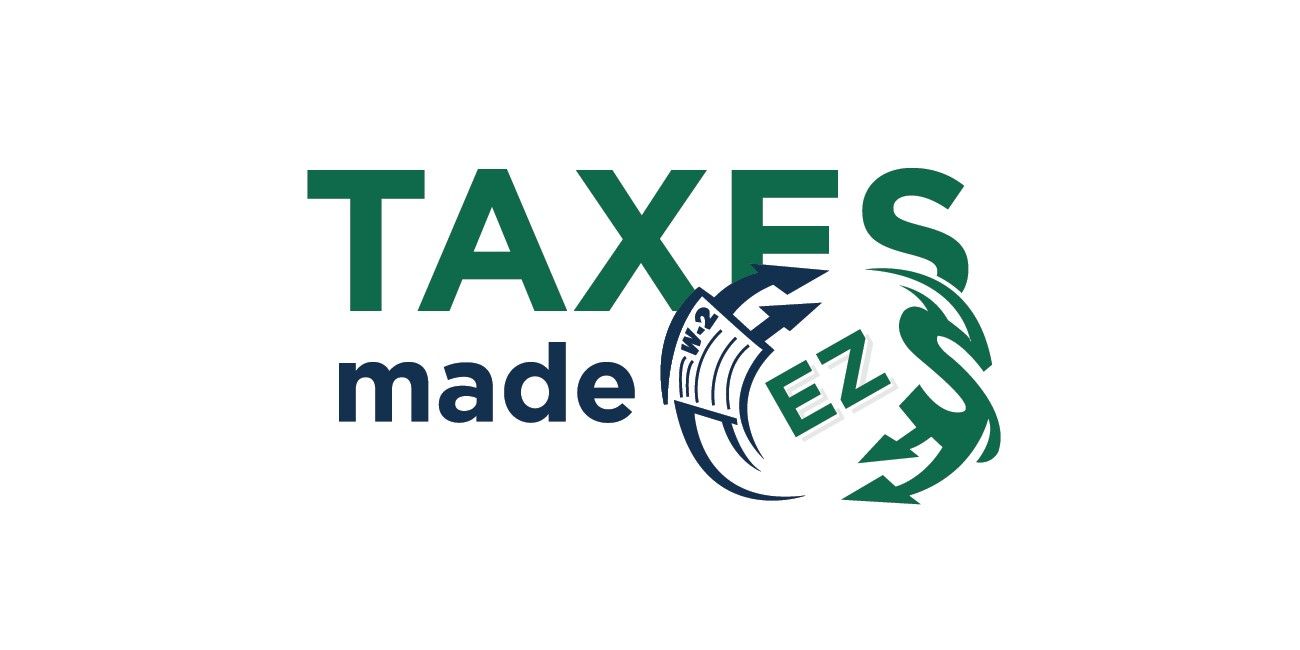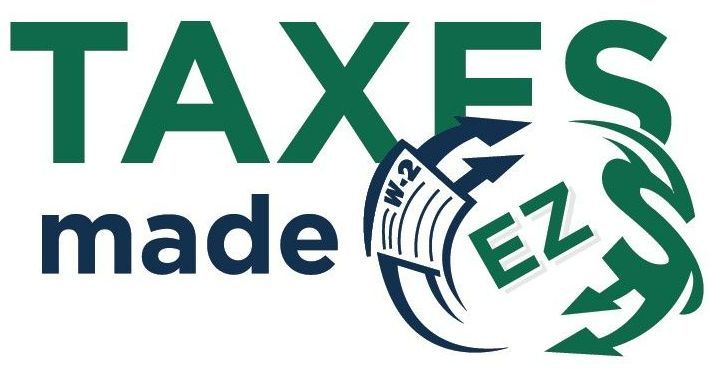Year-End Tax Planning: What You Need to Do Now
As the year draws close, it's the perfect time to start thinking about year-end tax planning.
Taking proactive steps now can help you minimize your tax liability and maximize available benefits. At Taxes Made EZ, we provide essential tips and strategies to ensure you’re well-prepared when tax season arrives.
1. Review Your Income and Expenses
Start by reviewing your income and expenses for the year. This will give you a clear picture of your financial situation and help you identify areas where you can potentially reduce your taxable income. Gather all your financial documents, including pay stubs, bank statements, and receipts for deductible expenses.
2. Maximize Retirement Contributions
Contributing to retirement accounts is one of the most effective ways to reduce your taxable income. If you haven’t maxed out your contributions to your 401(k), IRA, or other retirement plans, consider doing so before the end of the year. For 2023, the contribution limit for a 401(k) is $19,500 (or $26,000 if you’re 50 or older), and for an IRA, it’s $6,000 (or $7,000 if you’re 50 or older).
3. Take Advantage of Tax Deductions and Credits
Ensure you’re taking full advantage of all available tax deductions and credits. Common deductions include those for mortgage interest, student loan interest, medical expenses, and charitable contributions. Tax credits, such as the Earned Income Tax Credit and the Child Tax Credit, can directly reduce the amount of tax you owe.
4. Plan for Capital Gains and Losses
Consider your capital gains and losses if you’ve sold investments this year. Harvesting losses to offset gains can help reduce your taxable income. You can also use up to $3,000 of excess losses to offset other income. Be mindful of the “wash sale” rule, which disallows the deduction if you purchase the same or substantially identical investment within 30 days before or after the sale.
5. Check Your Withholding and Estimated Taxes
Review your tax withholding and estimated tax payments to ensure you’ve paid enough throughout the year. If you’re at risk of underpayment, you might need to adjust your final estimated tax payment or increase withholding from your paycheck to avoid penalties.
6. Consider Charitable Contributions
Donating to charity is a great way to give back to the community and receive a tax deduction. Ensure your donations are made to qualified organizations and keep detailed records of your contributions. For 2023, you can deduct cash contributions to public charities up to 60% of your adjusted gross income.
7. Utilize Flexible Spending Accounts
If you have a Flexible Spending Account (FSA) for healthcare or dependent care expenses, check your balance and ensure you use the funds before the end of the year. FSAs typically have a “use-it-or-lose-it” policy, meaning you forfeit any remaining funds.
8. Consult with a Tax Professional
Year-end tax planning can be complex, and consulting with a tax professional is beneficial to ensure you’re making the best decisions for your situation. At Taxes Made EZ, our team of experts can provide personalized advice and help you implement effective tax strategies.
Planning and preparing for your taxes before the year ends can significantly impact your financial well-being. By following these tips and working with a professional, you can reduce your tax liability and set yourself up for a successful tax season. At Taxes Made EZ, we’re here to help you navigate the complexities of year-end tax planning. Contact us today for expert guidance and support.
Call us today at (856) 232-0958
or schedule a call today.

By Ralf Reinberg
•
October 27, 2024
At Taxes Made EZ, we understand that tax planning is essential for individuals in all financial situations, but it becomes even more critical for high-income earners. Proper tax planning can optimize deductions, maximize savings, and create a long-term strategy to reduce tax burdens while fully complying with tax laws. Below are some key strategies and tips specifically for high-income earners. Minimize Your Tax Liability The U.S. tax system is progressive, meaning that your income increases, so does your tax rate. High-income earners fall into the highest tax brackets, with marginal rates reaching 37%. Strategic tax planning is vital to reduce your taxable income and minimize your debt. One effective way to do this is by contributing to tax-deferred retirement accounts such as a 401(k) or traditional IRA. These contributions lower your taxable income while helping you build a solid retirement plan. Additionally, contributing to Health Savings Accounts and 529 college savings plans offers tax advantages. HSAs provide tax-free funds for qualified medical expenses, and 529 plans help you save on education costs. Maximize Deductions and Credits For high-income earners, itemizing deductions can provide far more tax savings than the standard deduction. Some of the most beneficial deductions include mortgage interest, charitable contributions, and state and local taxes up to $10,000. Planning ahead can further enhance these deductions by strategically timing charitable donations or deferring income into the next tax year. Tax credits can also directly reduce your tax bill, making them extremely advantageous. High-income earners should explore credits for energy-efficient home improvements, educational expenses, and other applicable credits. These credits can significantly lower your overall tax liability, and checking eligibility each tax year is essential. Manage Investment Income High-income earners often generate significant income through investments in stocks, bonds, real estate, and other assets. Investment income is subject to different tax rules, and smart planning is essential to minimize taxes in this area. For example, holding investments for more than a year benefits you from lower long-term capital gains tax rates, while short-term gains are taxed at your regular income tax rate. Tax-loss harvesting can also be a valuable strategy—selling losing investments to offset gains and reduce taxable income. Additionally, focusing on assets that generate qualified dividends, which are taxed at the lower capital gains rate, can provide further tax savings compared to ordinary income. Consider Estate and Gift Tax Strategies For individuals with significant wealth, estate and gift taxes can take a large chunk of your assets, with estate tax rates reaching as high as 40%. Estate planning is crucial to minimize the impact of these taxes and protect your wealth for future generations. High-income earners can take advantage of strategies such as gifting assets to heirs. The annual exclusion limit allows you to gift up to $17,000 per recipient, tax-free. Additionally, establishing irrevocable trusts can protect your assets from estate taxes while enabling you to pass on wealth in a tax-efficient manner. Partner With a Tax Professional At Taxes Made EZ, we are committed to putting your financial goals and circumstances first. Our team stays current on the latest federal and state tax laws, and we specialize in working with high-income earners and individuals with complex financial situations. We’re here to help you navigate the intricacies of tax planning, ensuring you take full advantage of every opportunity to reduce your tax burden. When you partner with us, you can feel confident knowing that our tax experts are working to safeguard your financial future. Let us help you simplify your tax-filing process while maximizing your savings. Call us today at (856) 232-0958 or schedule a consultation to learn more.

By Ralf Reinberg
•
October 27, 2024
A Roth IRA, or individual retirement account, is a powerful tool to help secure your financial future. Unlike traditional retirement accounts, contributions to a Roth IRA are made with after-tax dollars. This means you pay taxes on the money upfront, but the funds grow tax-free, and withdrawals in retirement are also tax-free, as long as certain conditions are met. Below, we’ll explore the benefits of a Roth IRA and strategies to maximize its potential. Understand the Benefits A Roth IRA offers several key benefits that make it an attractive option for retirement planning. The primary advantage is tax-free growth. Since you contribute after-tax dollars, your investment earnings grow tax-free, and withdrawals made after retirement, once you meet the conditions, are also tax-free. To qualify, you must have held the account for at least five years and be 59 and a half years old. Additionally, unlike traditional IRAs, Roth IRAs do not require mandatory distributions at age 73. This lets your investments grow for as long as you want, giving you greater control and flexibility over your financial future. Maximize Contributions Maximizing your contributions is essential to get the most out of your Roth IRA. While large donations are ideal, even negligible, consistent amounts can add up over time, thanks to the power of compound interest. For 2024, the contribution limit is $6,500 per year, or $7,500 if you're 50 years old or older. Check income eligibility limits, as they can affect how much you can contribute. Starting early and contributing regularly can significantly boost your retirement savings in the long run. Diversify Your Investment Strategy It’s important to remember that a Roth IRA is an account, not an investment itself. You can invest in stocks, bonds, mutual funds, ETFs, and more within the Roth IRA. Diversifying your investments is crucial to manage risk and optimize growth. A balanced mix of growth-focused assets like stocks and more conservative investments like bonds can provide long-term stability. Aim for an investment strategy that aligns with your age and risk tolerance, and adjust as you approach retirement. Monitor and Adjust Over Time As your life circumstances and financial goals evolve, your Roth IRA should evolve with them. Regularly review your account, assess your contributions, and fine-tune your investment strategy. Whether your income increases or your retirement timeline shifts, periodic adjustments can ensure that your Roth IRA remains aligned with your financial goals. Combine With Other Retirement Plans One of the advantages of a Roth IRA is that it can complement other retirement plans, such as a 401(k). A 401(k) offers tax-deferred savings, while a Roth IRA grows tax-free. Having a combination of tax-deferred and tax-free accounts gives you more flexibility in retirement, allowing you to manage your withdrawals more efficiently and potentially reduce your overall tax burden. Plan for a Secure Future Planning your financial future with a Roth IRA can provide long-term financial security, especially when paired with other retirement strategies. Consider consulting one of our expert tax professionals to ensure you’re making the most of your Roth IRA and other retirement accounts. We can guide you through the process and help you maximize your retirement savings. Call us today at 856-232-0958 or schedule a consultation to get started.
Browse Our Website
Contact Information
Phone: (856) 232-0958
Email: info@mytaxesmadeez.com
Address: 312 South Black Horse Pike, Blackwood, NJ 08012






Content, including images, displayed on this website is protected by copyright laws. Downloading, republication, retransmission or reproduction of content on this website is strictly prohibited. Terms of Use
| Privacy Policy

